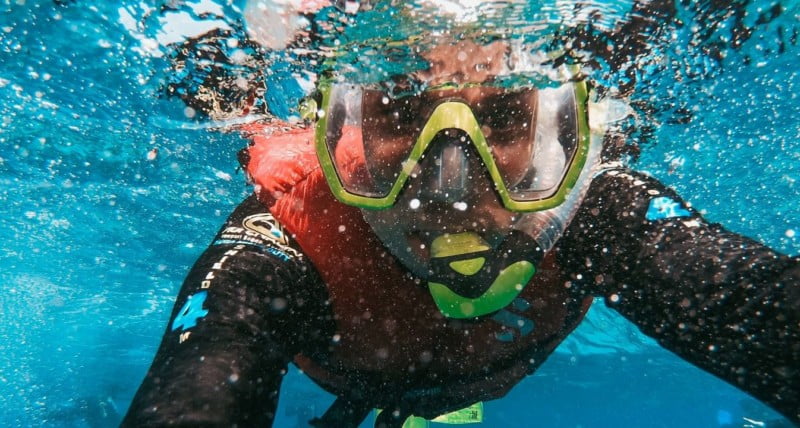Traveling To Bali With Power Bank And Diving Torch
Can you fly to Bali with your Power Bank?
Now that you have finally booked your diving trip in Bali and you are buzzing with excitement to see all the stunning underwater life here, especially on your Bali night dive, it is very likely that one question pops-up in your mind: Can you fly with your diving torch? This is an important issue to consider mostly for underwater photographers longing to capture the tropical marine beauty of Bali in all its colors and those keen on night diving in Bali. In this blog, we will try to guide you through all the restrictions concerning carrying different types of batteries and diving torches on an airplane. The same rules can be applied to traveling with power banks and since the regulations got much stricter recently, these can be very handy as you surely want to avoid leaving your device behind at the airport.
Help! Going to Bali but Want to Take My Power Bank. Can I?
Knowing ahead of time what items must be checked and what can be carried on before you arrive at the airport can save you a lot of time and nerves. Luckily for divers, it is possible to fly with your diving torch, but you should always contact the airline as some require their approval. Generally, diving lights and torches have the potential to heat more than usual flashlights and they must be disabled so there is no chance that they can unintentionally switch on. It is advised to store them in your carry-on baggage and separate or disconnect batteries and bulbs from the rest. If removing a battery from the diving torch, it must be protected from short-circuiting by the application of electrical tape or similar means. Your airline might also have certain restrictions on the permitted amount of dive torches and devices containing batteries, so make sure that you tell the airline that you are traveling to Bali with about these items to avoid complications prior to boarding.
Regarding batteries, each airline sets its own number of spare batteries and this also includes any power bank, which is considered as a battery, too. There are further regulations based on their contents and power. In general, any rechargeable battery, especially those made from Lithium Ion or Lithium Metal, must always be declared during check-in and located in your carry-on luggage. Moreover, all kinds of batteries must be protected by taping over the exposed terminals to prevent possible short circuits.
What power bank you can bring to the airplane?
Rechargeable lithium-Ion battery not exceeding 100Wh can be usually carried without airline approval. The same goes for non-rechargeable lithium metal batteries that are not exceeding 2g of lithium metal as well as non-spillable batteries up to 12V and 100Wh. You can also travel with batteries made from alkaline, nickel metal hydride (NiMh), nickel cadmium (Nicad), etc, meaning that single-use AA, AAA, 123, CR123A, CR1, CR2, CRV3, CR22, 2CR5, and flat round lithium button cells generally comply these rules.
What power bank needs to be approved by the airline?
If you are planning to bring a rechargeable Lithium-Ion battery exceeding 100Wh and up to 160Wh, you need to have the approval of the airline, and it is possible to bring only two of these. Identical rules also apply to non-rechargeable Lithium Metal batteries exceeding 2g and up to 8g of lithium metal, but these can be usually used for portable medical equipment only and again, there is the limit of 2 pieces per person. It is also possible to carry a combination of batteries such as 10 x 98Wh lithium-ion + 2 x 138Wh lithium-ion + 2 x 12V & 98Wh non-spillable + 6 x alkaline.
What power bank you cannot bring to airplane
Any lithium-ion batteries over 160Wh are forbidden and must be sent as freight. Batteries and power banks without clear rating identification are not allowed to be carried onboard and will be confiscated. Also, it is highly possible that products powered by lead-acid battery, including LED and flashlight, will be rejected during security inspection at the airport.
How to Calculate Watt-Hours per Lithium-Ion Battery or power bank?
Calculating individual watt-hours per battery is simple and you will use the information on the battery case. Hence, it is needed to multiply the volts (V) by the ampere-hours (Ah) to get the result. If a battery records its energy rating in milli-amp hours, you will divide it by 1000 to get to its ampere-hours.
You can use the following formula: Wh = mAh / 1000 x Volt.
For example, a 20,000 mAh mobile power bank with a voltage rating of 3.7V, then its rated energy is 20000mAh/1000* 3.7V=74Wh.
Lastly, please note that all the information stated above is general and we strongly advise you to contact your airline to ensure that your diving torch and battery meet all their requirements. It could be that each operator has its own rules, and these can also differ from country to country. Nevertheless, in case you are not able to fly with your diving torch, most of the diving resorts in Bali, such as OK Divers in Padangbai, offer the possibility to rent diving torches and other gear so you can still enjoy your night diving in Padangbai as well as focus on underwater photography. In case you need some inspiration on the most interesting Bali dive sites, check out our Bali diving locations or book diving in Bali with us.



